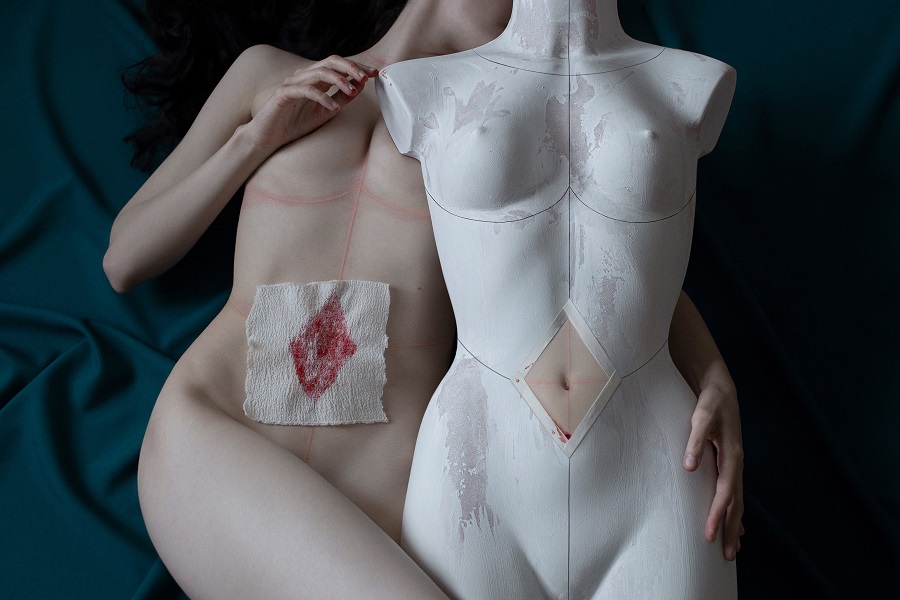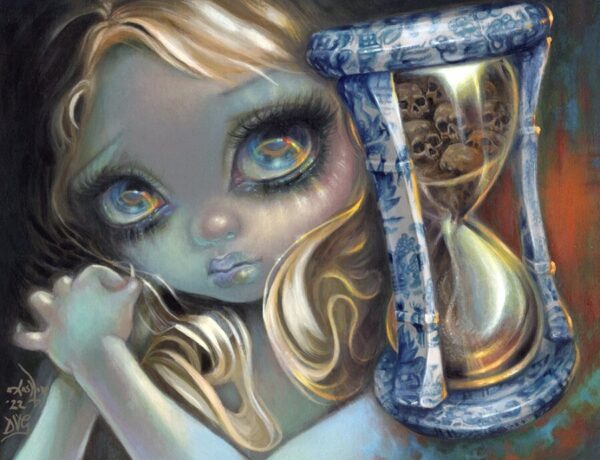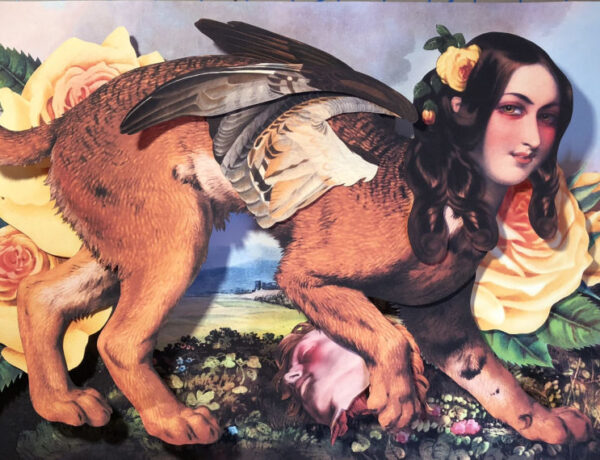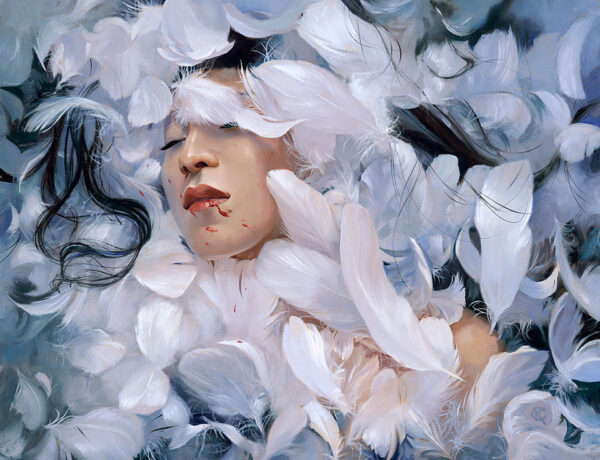Exclusive Interview With Iness Rychlik, 2nd Prize Winner of the INPRNT Photography Award, 2023 Beautiful Bizarre Art Prize
From her sacred space, Polish-born photographer and filmmaker, Iness Rychlik, captures the divine feminine in exploration of themes, both light and dark. Utilizing her body as a canvas, the diverse elements of her visual storytelling resonate in layers of romanticism and pain, vulnerability and innocence, like a conceptual rapture melting into you. Emblematic props and details such as pins, historical costumes, flowers and food steep into her vision as a woven compliment to her compelling titles.
The juxtaposition of frailty and fortitude creates a contrast that invites us to not only question the conventional standards of beauty, and stigmatization surrounding women’s bodies in today’s mainstream media, but gives deeper insight to her creative expressions. Pressing and drawing patterns onto her delicate skin, Iness Rychlik speaks to a love language we want to understand. Evoking a range of emotion there is mystery and a sense of longing in her work. An omen, a memory… only she knows its depths.
A catalyst to imagination, we hinge ourselves to her portraits, interpreting each antidote that spills into our thoughts. Through our many interpretations, the duality of energy unearths a new experience, unpacking layers of mood and ambient sentiment. I had the pleasure of speaking with Iness Rychlik to learn more about her self-portraiture, her Beautiful Bizarre Art Prize winning piece, “Beyond Repair”, and so much more. We hope you enjoy!

Digital: Canon 6D, 1.4 50mm, Self-portrait
2nd Prize Winner
Beautiful Bizarre Art Prize 2023 INPRNT Photography Award
Throughout testing, my live canvas often disintegrates into blotchy redness and unintelligible patterns. Such sensitive skin takes time to reset and I can’t simply start over without letting it rest for a few hours. I need to know exactly what I’m doing on the day – my window of opportunity is mercilessly narrow.
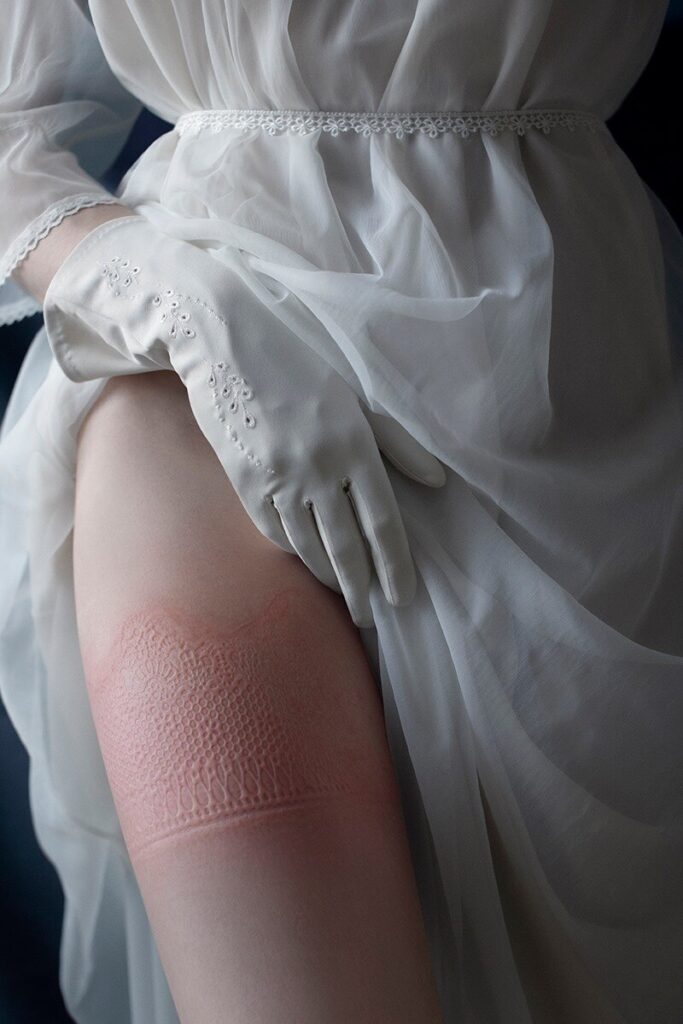
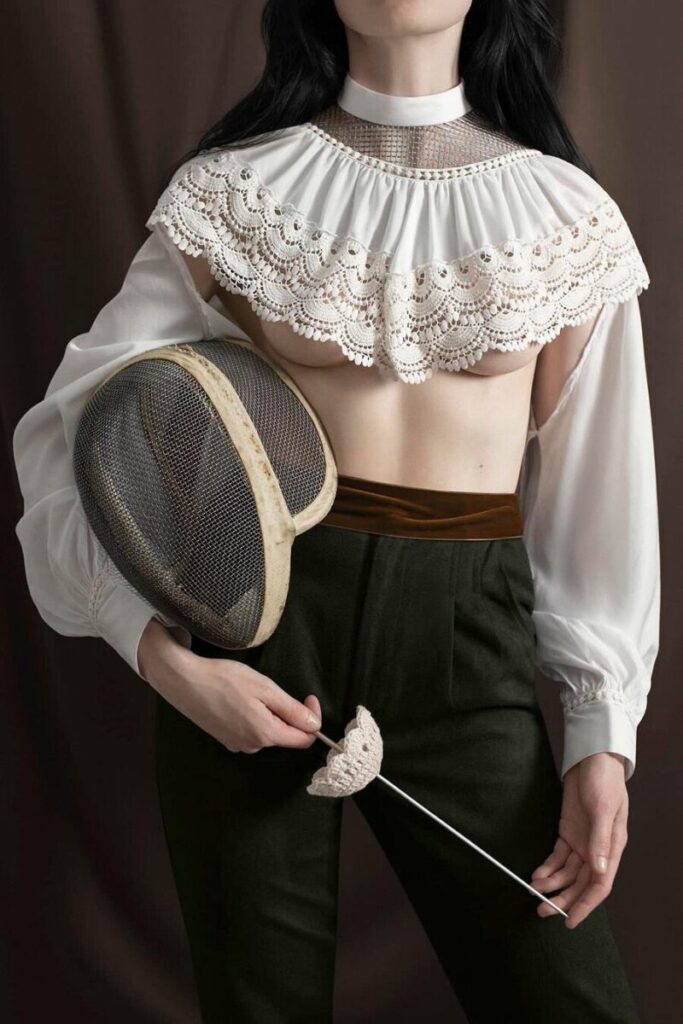
Exclusive Interview with Iness Rychlik
Iness, it’s such a pleasure to speak with you. First let me say, congratulations on being selected as the 2nd Prize Winner of the INPRNT Photography Award in the Beautiful Bizarre Art Prize 2023 for, “Beyond Repair”!! What was the moment like when you realized you’d won?
Thank you so much; I was absolutely delighted! It was lovely news to wake up to on one Tuesday morning.
Accentuating a delicate familiarity, the mood of your portraits lends itself to a nearly physical intimacy that allows the viewer to wander in their own interpretive direction. Would you take us through the physical and psychological challenges and preparations of your winning piece, “Beyond Repair”?
I always say that using my skin condition as canvas is a physical and logistical challenge. While the actual shoot might take a couple of hours, I do a lot of meticulous work in the weeks prior during testing and “rehearsals”. Every self-portrait is different – an individual piece of work, a puzzle I am determined to solve. Sometimes I draw on my skin from scratch, other times I press objects onto my body, and quite often – as with “Beyond Repair” – I combine both techniques. It is the most difficult approach due to the critical aspect of timing.
The drawings begin to appear and swell up after around 10 minutes (meaning I’m doing a lot of estimating and shooting in the dark, not to mention my drawing skills are questionable – that’s all a feat in itself). Meanwhile, pressed patterns are satisfyingly clear for a hot minute.
I want photography to remain meditative and therapeutic – it is my great unconditional love.
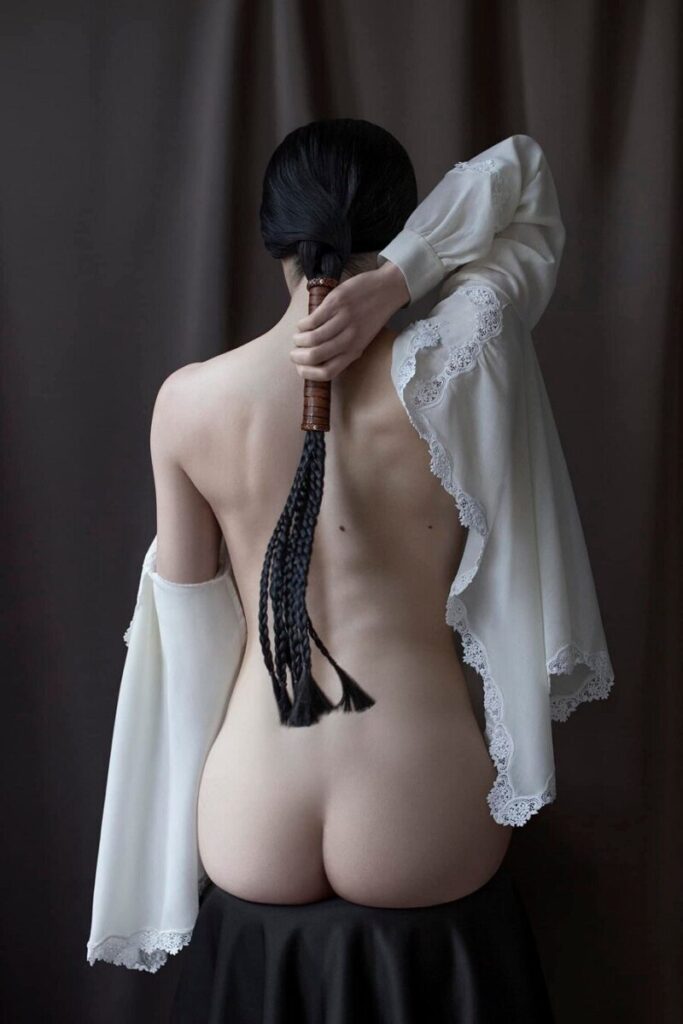
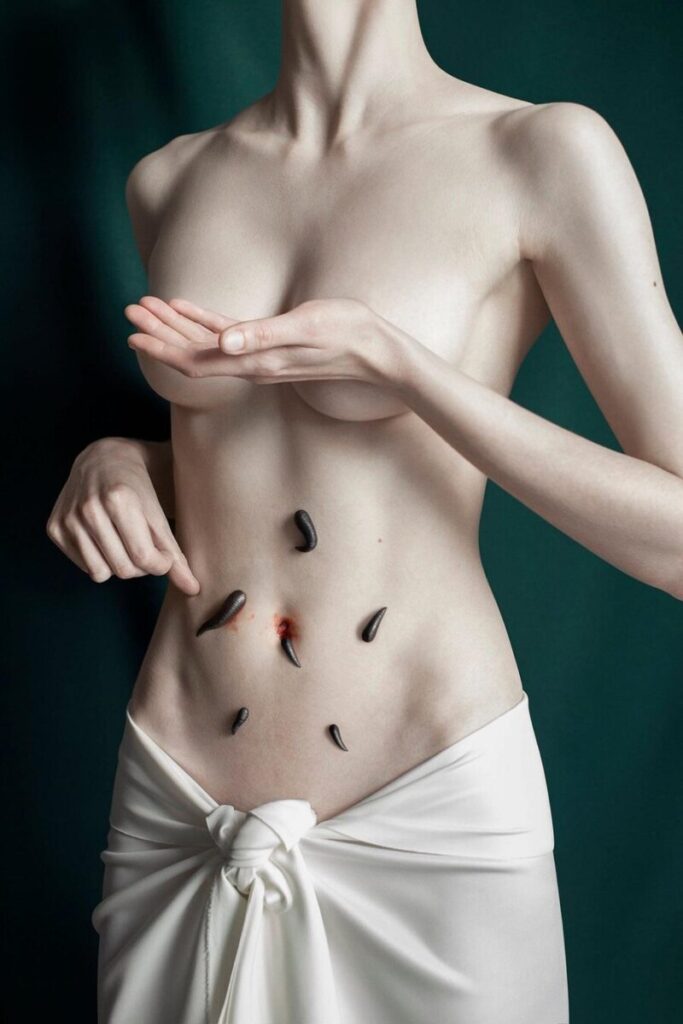
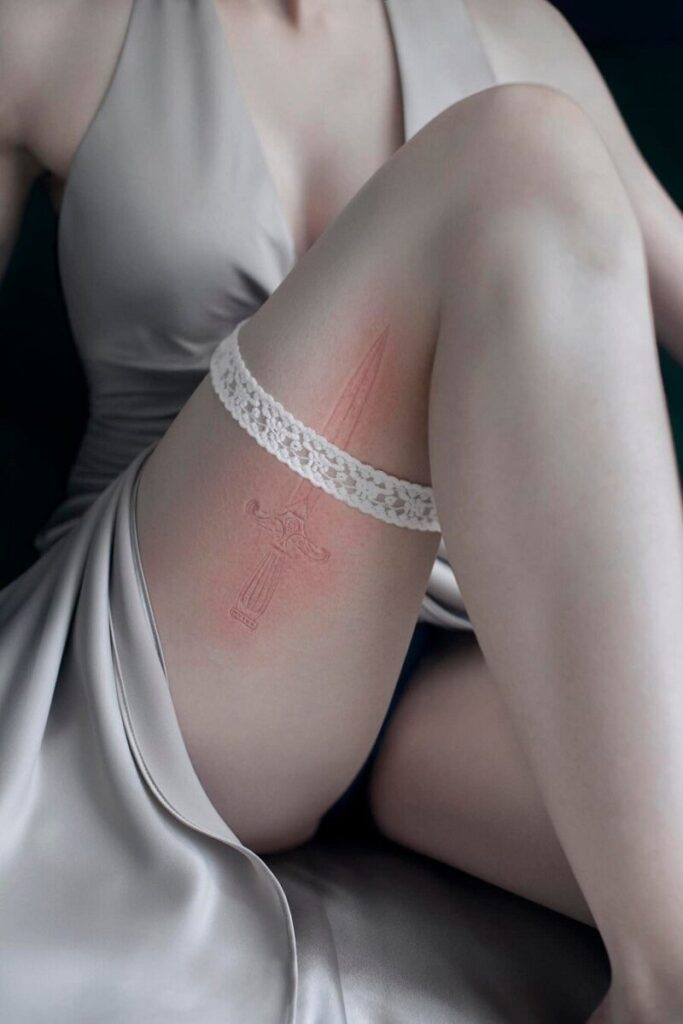
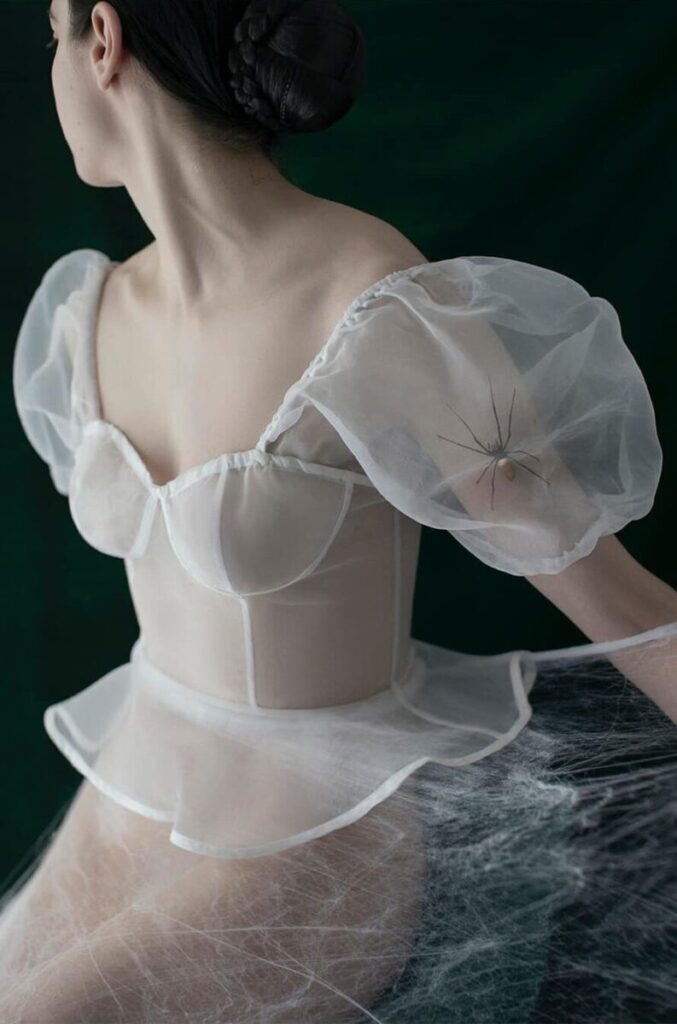
Throughout testing, my live canvas often disintegrates into blotchy redness and unintelligible patterns. Such sensitive skin takes time to reset and I can’t simply start over without letting it rest for a few hours. I need to know exactly what I’m doing on the day – my window of opportunity is mercilessly narrow.
Although, it can be (and often is) incredibly frustrating, I see it as a form of taking control over my condition and my bodily autonomy as a whole. “Beyond Repair” is not so much about this rare(ish) skin condition, as it is about the sadly more common experience of having that agency taken away, and the struggles of trying to cope with it. Reflecting on this was the biggest psychological challenge.
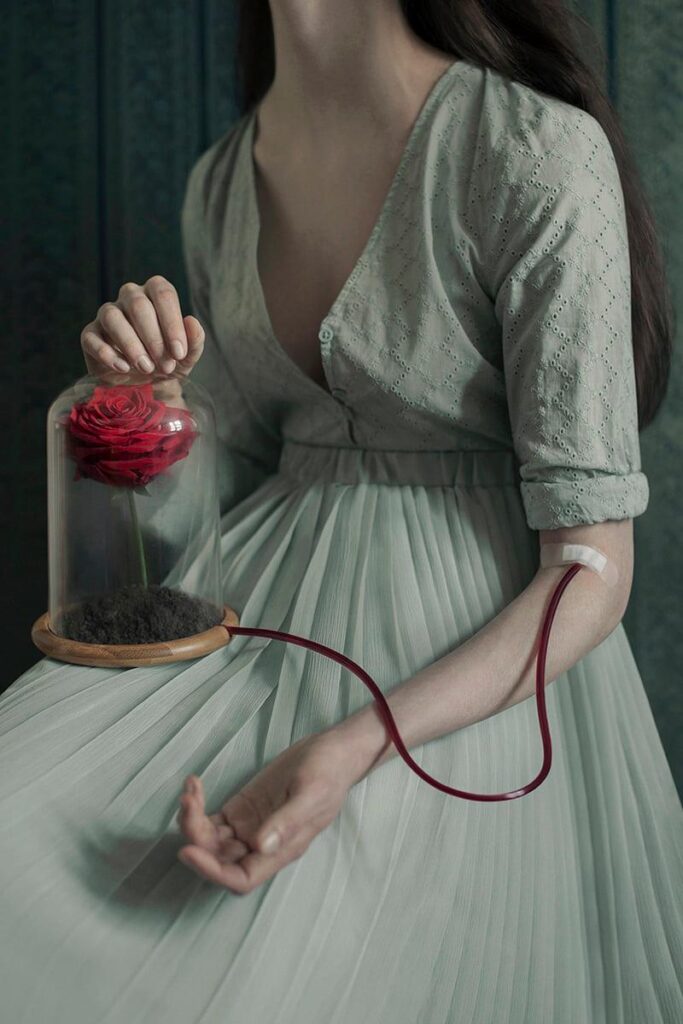
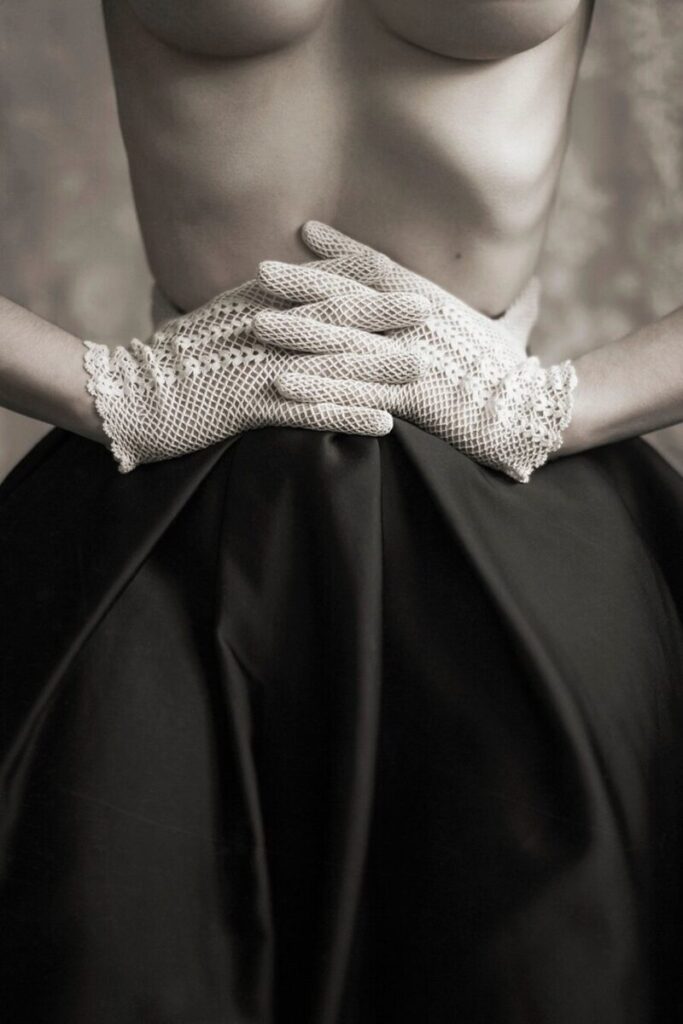
As we talk about the sensitivity, the thought-provoking nature of your chronic skin condition allows your body to be a canvas for artistic ideation. Iness, based on the nature of your work while balancing the scales of emotion, how do you effectively manage stress reduction and mindfulness while at the same time engaging your creative expression? Where do you find a middle-ground to further the complexities of your vision?
I do my best to let go of stifling expectations – both internal and external. While I consider myself very ambitious, I don’t set up my camera with the goal of creating some sort of masterpiece on demand. I take as much time testing as I feel appropriate – without judgment, self-censorship or pressure.
Making the space for pure exploration allows me to develop my creative direction. Moreover, my self-portraiture is in no way tied to my financial stability. Although balancing a job with my art is not the most thrilling notion, I am free in my expression – however beautiful or bizarre – without having to hold myself back and worry about what is marketable. I want photography to remain meditative and therapeutic – it is my great unconditional love.
The formative years are crucial building blocks to the blueprint of our lives – I read that as a teen, you tried to hide your skin condition. Did you do this to prevent misunderstanding and questions? Sadly, these types of reactions from others can be extremely detrimental to self-worth. How did you cope with that?
The unsolicited remarks regarding my appearance, including my skin, certainly impacted my sense of self-worth growing up. However, I cannot discount the fact that my formative years in Poland were tough for a number of reasons. Even as teenager, what helped me through the trauma was my fascination with art. Being so young and vulnerable, I was not in a position to confront difficult emotions through photography the way I am now.
Back in those days, I would escape into the polar opposites of my everyday life – a world filled with frills and blush ribbons, where my sisters and I frolicked around the moors as romantic heroines. It was a beautiful refuge, a fantasy and quite frankly, a lifeline.
Additionally, what circumstances led to the discovery that it could be positively embraced and utilized as a beautiful extension of your soul self?
Reflecting back on my twenties, I think that moving to London after graduation contributed to my photographic revival and the unconstrained explorations that led me to working on live canvas. The four years of film school in Edinburgh had been challenging – though I was deeply invested in academic writing, the struggle of studying while supporting myself with multiple jobs was overwhelming. London’s ruthless energy jolted me out of my photographic apathy. I was desperate to take advantage of the city’s immense cultural assets. At that time, I also began attending therapy again. Buried feelings resurfaced and I wanted to express them in a way that felt most personal.
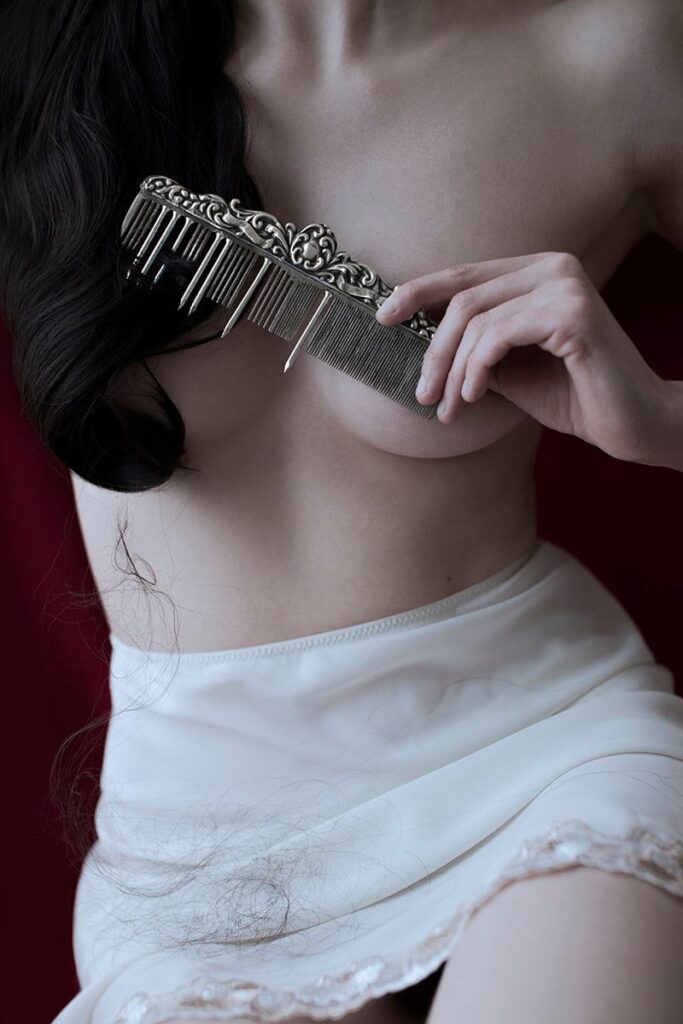
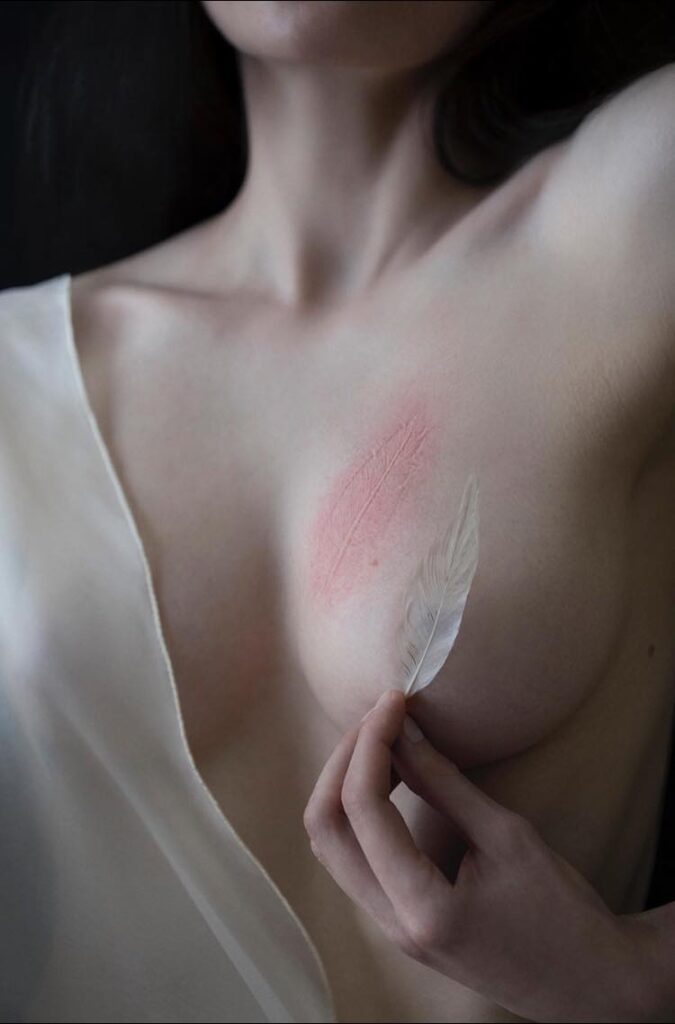
How important is your working environment? And will you describe a place (your favorite place) that has become inspirational to the creation of your photographs – one that plants seeds in your imagination.
My working environment plays a pivotal role in my work. During my teenage years and early twenties, I spent a great deal of time photographing outdoors. As I grew older, I became more introspective in my practice, which drew me indoors into an intimate and controlled environment. I need my surroundings perfectly organised before unleashing any creative experiments (and mess).
However, this notion of a working environment goes beyond the physical tidiness. I’m about to move in with my fiancée, which is incredibly exciting, but makes me feel unsettled in my current apartment. I have decided to defer my artistic plans for the next couple of weeks, until the move is complete. Can you believe I’m getting a walk-in prop closet?! Carrie Bradshaw has nothing on me.
A walk-in prop closet… this I have to see! Watch out Narnia. Speaking of faraway places, what do you see on the horizon, Iness? Will you tell us about your plans for the rest of the year and what you hope to accomplish?
Once I have moved and organized all the weird props I have accumulated, I plan to develop a piece that explores the notion of home and displacement. The upcoming year, of 2024, is going to be thrilling; I look forward to involving my fiancé more in my self-portraiture.
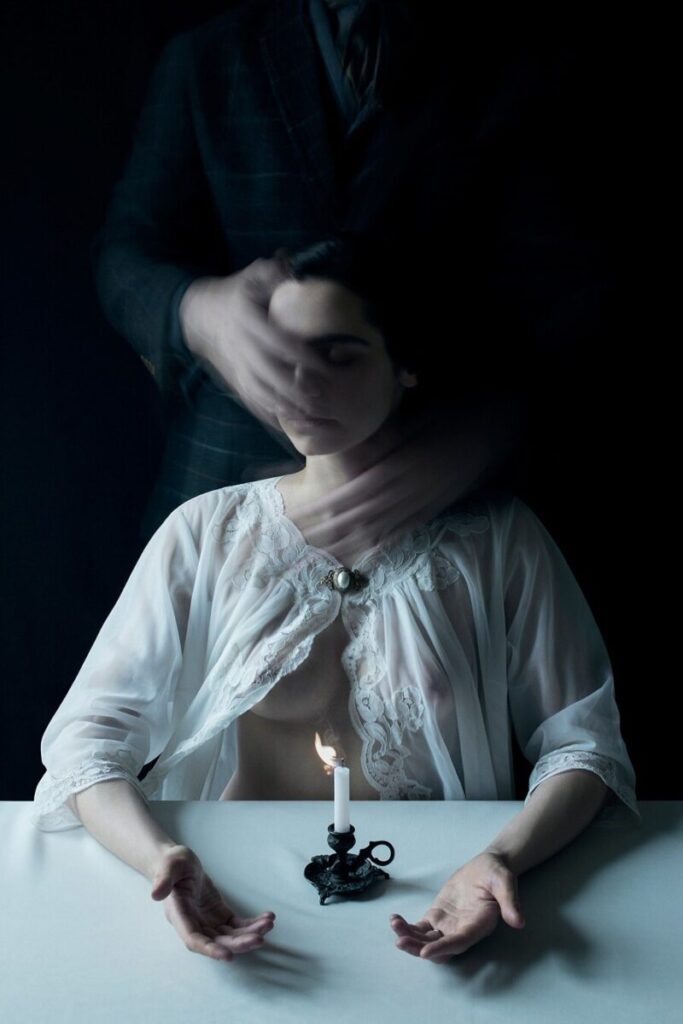
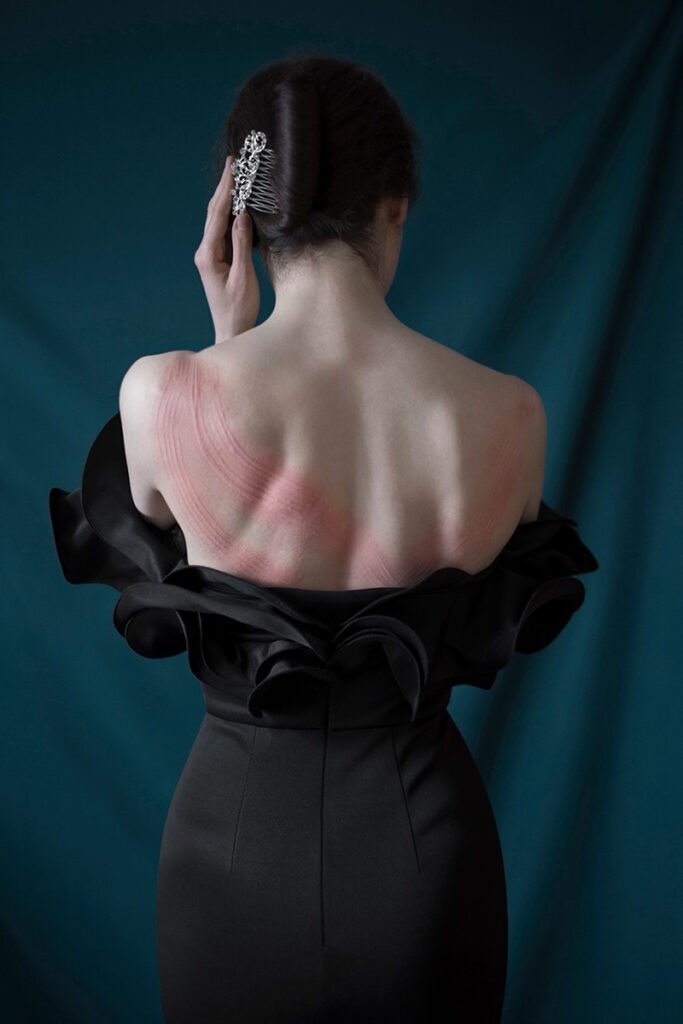
And last but not least…
Why did you enter the Beautiful Bizarre Magazine Art Prize?
The Art Prize provides a fantastic opportunity for reaching a wide audience of artists and art enthusiasts. I’m also happy to be working with Haven Gallery on the Serendipity exhibition.
Would you recommend it and encourage others to enter? If so, why?
From my experience art prizes can be a mixed bag, but Beautiful Bizarre is definitely one worth entering.
What do you feel you have gained from this experience?
One of the most valuable aspects of this experience has been the connections I’ve made with fellow artists. As you can probably appreciate, my practice is extremely solitary, so I greatly enjoyed meeting other Beautiful Bizarre artists and exchanging our experiences in an open and non-judgmental way.


